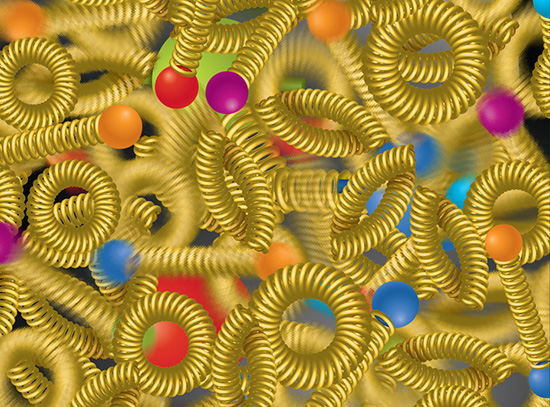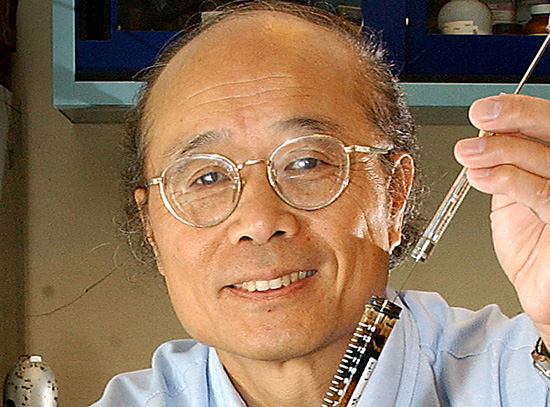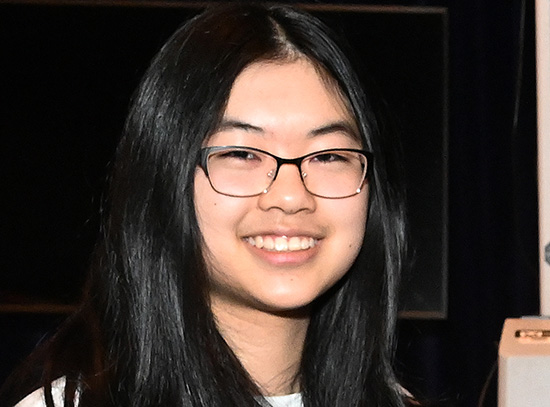Meet Paulo Castillo: First Postdoc AGEP-T FRAME Fellow at Brookhaven Lab
January 7, 2015
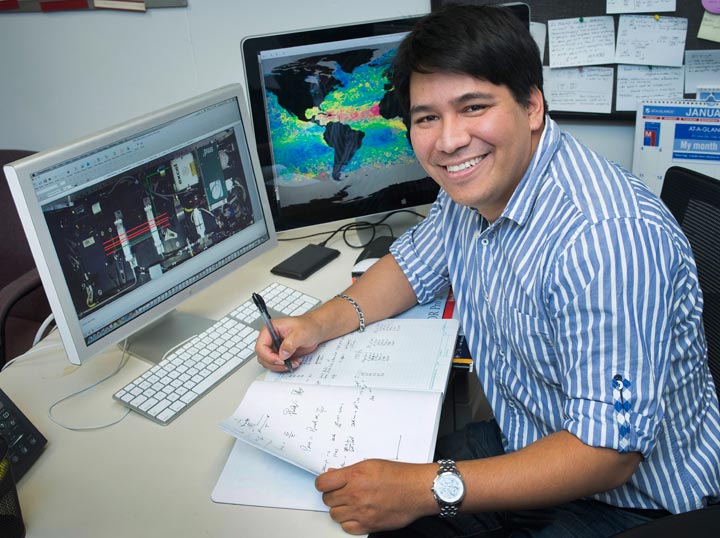
Postdoc Paulo Castillo is working with Lab researcher Art Sedlacek on research that focuses on how black carbon, sometimes referred to as soot, contributes to climate change.
The Office of Educational Programs (OEP) at Brookhaven National Laboratory is pleased to add another program to its already vigorous roster of educational opportunities for students of all ages.
Several months ago, the Lab and Stony Brook University were awarded funding by the National Science Foundation to establish the Alliance for Graduate Education and the Professoriate – Transformation (AGEP-T) Frontiers of Research and Academic Models of Excellence of Research (FRAME). The program is designed to support recruitment and retention of underrepresented and minority postdocs who wish to refine their skills and conduct research at institutions like Brookhaven National Laboratory and Stony Brook University. The long term goal of the program is to foster a competitive and diverse pool of ambitious and creative researchers who may become future leaders in academia and industry. Through this grant, the Lab hopes to retain some of the participants to help diversify our workforce.
Brookhaven is proud to welcome its first participant to AGEP-T FRAME — postdoc Paulo Castillo —who is being mentored by Lab researcher Art Sedlacek of the Environment, Biology, Nuclear Science and Nonproliferation Directorate (EBNN).
Sedlacek's research focuses on how black carbon, commonly referred to as soot, contributes to climate change. Black carbon is a very efficient absorber of solar radiation and in fact, is second only to CO2 with respect to atmospheric heating. In order to better quantify black carbon’s contribution, Sedlacek developed an instrument based on photothermal interferometry (PTI) to directly measure the absorption of light by these aerosol types.
Sedlacek said he welcomed the opportunity to have Castillo join his research efforts. “Paulo’s educational background made him a solid addition,” said Sedlacek. “He is a hard worker and brings enthusiasm to work each day. His background in electrical engineering and his thesis work on optical systems provide him with the skillset that will enable us to advance the photothermal interferometer.”
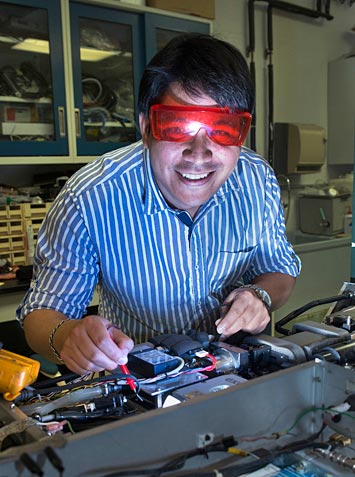
Postdoc Paulo Castillo performs a routine circuit test on the photothermal interferometry instrument (PTI).
As part of Castillo’s task, he will also be assisting Sedlacek in the analysis of data collected by the single particle soot photometer (SP2). The SP2 complements the PTI in that this instrument measures the mass loading of black carbon. Castillo’s personal research interests include optical remote sensing focused on infrared technologies, optical instrumentation, and atmospheric monitoring.
“When I learned that I would be working at Brookhaven Lab in the area of research for which I have a keen interest, I was very excited,” said Castillo. “Art and all of my colleagues here have already taught me a lot and have made me feel like I am part of a research team that is making a difference to what we know about the atmosphere and how aerosols can impact climate change and our environment.”
At Brookhaven, this grant is coordinated by Noel Blackburn, manager of university programs in OEP. Blackburn works with Terrence Buck, a principal human resources representative in the Lab’s Human Resources Department, who recruits underrepresented and minority students. Buck met Castillo at a career development event at the City College of New York (CUNY). “I immediately realized that he was likely a perfect match for the new AGEP-T FRAME program at Brookhaven,” said Buck. “I then contacted the EBNN Directorate to inquire if they had a scientist who would be interested in mentoring a postdoc in this new program.”
Once it was confirmed that researchers from EBNN were interested in participating in the program, Buck arranged a visit to CUNY where Sedlacek met Castillo and invited him to come to Brookhaven to give a presentation on his work.
“The rest is now history,” said Buck. “After Paulo gave his presentation he was offered the position and is now our first AGEP-T FRAME postdoc to participate in this new NSF program.”
Paulo Castillo earned his master’s (2007) and his Ph.D (2014) in electrical engineering from CUNY. He holds a bachelor of science (2005) from La Pontificia Universidad Catolica del Peru. In 2008, he became part of the Mid-Infrared Technologies for Health and the Environment Engineering Research Center with Princeton University. He is also a participant in the National Oceanic and Atmospheric Administration Cooperative Remote Sensing Science and Technology Center.
“Integrating educational program opportunities with the Lab’s research agenda is an important part of what we do,” said Kenneth White, manager for the Lab’s Office of Educational Programs. “We will continue to work with human resources and scientific staff to identify and recruit outstanding postdocs as candidates for this program.”
“This is exactly what I hoped for,” added Castillo. “I am grateful for the opportunity to work at the Lab with world-renowned scientists. My experience here will guide my career path. Someday, I hope to be a professor so I can do the same for others — share my knowledge and excitement about science and how it impacts our everyday lives.”
For information on this program or other university educational programs, contact Noel Blackburn, Ext. 2890, blackburn@bnl.gov.
2015-5420 | INT/EXT | Newsroom




